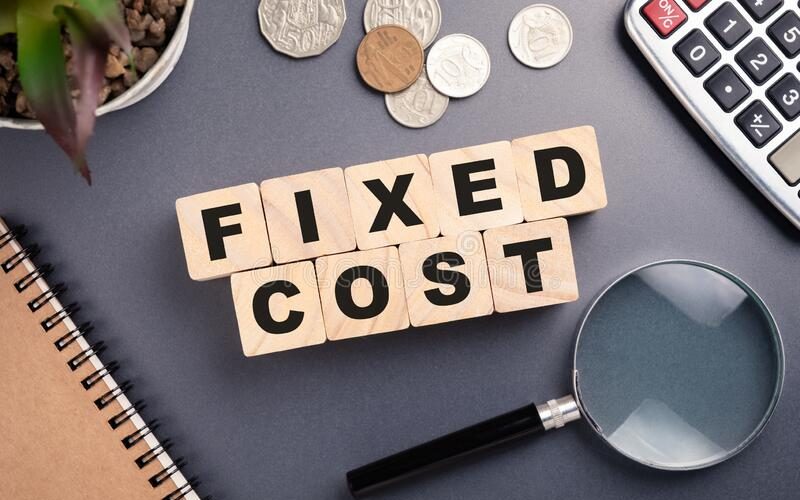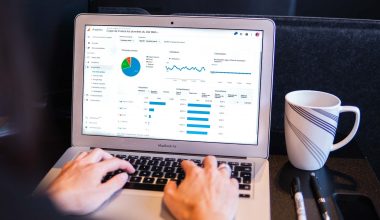A fixed cost is one that does not change as the number of goods or services produced or sold increases or decreases. Moreover, Fixed costs are expenses that businesses cover regardless of its unique business operations. This article reveals the fixed cost Examples, formula, how to calculate the fixed cost and the fixed cost and variable cost.
Generally, businesses might have two sorts of costs: fixed costs and variable costs, which add up to total costs. Shutdown points are commonly in use to decrease fixed expenses.
Fixed Cost Examples
The following examples illustrate the most frequent fixed costs.
Depreciation
Depreciation it is however the gradual decline of a tangible item over its useful life. It is however a fixed cost because it is incur with the same value across the asset’s life. It does not change.
Examples of fixed cost is Amortization
It is mainly in use to reduce the price of intangible resources. For a while. Repayment of debt is also in it Assume ABC Corporation spends $50,000 to obtain a license that will expire in 5 years. Moreover, It should diminish over the next five years before it expires. A $10,000 amortization expense will be as a fixed cost in the books.
Insurance
It is an insurance premium that is in payment on a regular basis. One of the examples, the cost of insuring the manufacturing facility is a fixed cost regardless of the number of production units.
Rent is Paid
The rent paid for the premises utilized to do business is another examples of fixed cost. However, This sum is not reliant on the firm’s earnings. Even in a retail store, rent is fixed and not on sales volume.
Interest Fee
Interest expense on any borrowings such as bonds, loans, or convertible debt, or even credit lines. Nevertheless, one of the examples of Fixed costs, often known as debt expenses, are incur by banks and financial organizations.
Real Estate Taxes
The government imposes a property tax on businesses, which is examples of fixed cost based on the overall cost of their assets. However, the payment is only once a year.
Salaries
Salaries are the fixed cost for staff members regardless of hours performed. So the rent and salary given to each employee of a company each month stays fixed and might be in regard as an example of a fixed cost.
Utility Bills
It is basically the expense of utilizing various utilities. Like electricity, gas, phone bills, internet bills, telephone bills, and so on are all fixed costs.
Expenses for Marketing and Promotion
Marketing is a key investment in the budget of any small business. Moreover, the Advertising budget comprises a wide variety of expenses like print and broadcast advertisements, brochures, marketing campaigns, catalogs, and so on.
Promotional campaigns include activities such as gifts, sweepstakes, focus groups, and surveys. The dollar amount of the expense may vary from quarter to quarter or year to year, but it is nevertheless a fixed cost.
Rental of Equipment
There is equipment that is employ for a period of time in various units of production, and such equipment is in renting. This type of equipment rental is set in nature and obviously has fixed costs.
Legal Expenses
They are expenses incurred in the company’s legal processes and regulation formation that are set in nature and thus fixed costs.
Fixed Cost Formula
The fixed cost formula is determined by multiplying the variable cost of production per unit by the number of units produced and then subtracting the result from the overall cost of production. It is thereby expressed mathematically as,
Fixed Cost = Total Cost of Production – Variable Cost Per Unit * No. of Units Produced
The Following Steps Can Be Used To Compute the Fixed Cost Formula:
Fixed Cost Formula Step 1
First, calculate the variable cost of production per unit, which can be the sum of various production costs such as labor, raw material costs, commissions, and so on. However, These costs, as the name implies, are variable in nature and fluctuate with the degree of production or sales volume.
Step 2 Fixed Cost Formula
Now, calculate the total number of units generated within the time period. The manufacturer is moving out in accordance with a set production schedule.
Formula for Fixed Cost Step 3
Then, multiply the variable cost per unit (step 1) by the number of units produced (step 2) to get the overall variable cost of production, as illustrated below.
Total Variable Production Cost = Variable Cost Per Unit * Number of Units Produced
Fixed Cost Formula Step 4
Furthermore, calculate the overall cost of production for the business over the time frame, which is the sum of all costs incurred during the course of production.
Fixed Cost Step 5 Formula
Lastly, the total fixed cost of production can be computed by subtracting the total variable cost (step 3) from the overall cost of production (step 4), as shown below.
Fixed Cost = Total Production Cost – Variable Cost or Fixed Cost = Total Production Cost – Variable Cost Per Unit * Number of Units Produced.
How To Calculate Fixed Cost
To calculate fixed costs or expenses, sum all of your fixed costs together. Follow the steps below to compute the fixed cost
#1. Make a List of All Expenses
you can calculate the fixed cost by outlining all of your company’s monthly expenses. Examine your receipts, budgets, and bank account activity for guidance. Plus annual expenses should be in the division by 12 and accounted for. Ensure to List every spend and the monthly amount of that expense, ideally in a spreadsheet.
ABC Dolls is an example of how to calculate fixed costs, and manufacture toy dolls for youngsters. In order to determine a suitable price for its goods, the company must calculate its fixed cost. They prepare a list of all their monthly expenses.
#2. Distinguish Between Fixed and Variable Costs.
Because of your sole interest in constant costs, divide the list of expenses into fixed costs (those that do not vary depending on production or sales) and variable costs (those that are directly in pact by production or sales).
ABC Dolls, for example, divides its total cost into fixed and variable costs. Building rent ($3,000), personnel salary ($80,000), equipment ($2,000), and a website ($200) are among their fixed costs.
#3. Include Fixed Expenses
Add all of the individual monthly figures from the fixed cost list. That figure shows your total monthly set expense
For instance, ABC Dolls adds together all of its separate fixed costs to determine its overall fixed costs:
$85,200 = $3,000 + $80,000 + $2,000 + 200
ABC Dolls now understands that they must factor $85,200 every month into the price of their dolls. ABC Dolls must calculate the average fixed expense in order to determine the appropriate pricing per doll.
Fixed Cost and Variable Cost, What’s the Difference?
Fixed costs are constant from month to month, whereas variable costs are always related to production levels and can change depending on current output. For example, if you have a five-year lease on the building in which your company is located, the cost (rent) will not change until the present lease expires.
But, if your sales orders grew in the previous month, you are paying for extra supplies to fulfill those orders. Additional commissions to salespeople. Plus greater shipping expenses when the products are sent out.
When You Should Use Fixed Cost and Variable Cost
Throughout the life of your firm, both fixed and variable costs will be in use. Even if you are drafting next year’s budget or estimating present operational expenses, you should check both cost types to maintain completeness.
While deciding whether to utilize fixed or variable expenses is often clear, there are situations when it might be difficult to determine which category should be used.
Here are a couple of instances.:
When It Comes To Hiring a New Employee
Depending on how you pay the new employee, your costs will be fixed or variable. Moreover, The cost of recruiting administrative staff is fixed. Whereas the cost of hiring an hourly employee is variable, based on the number of hours worked and any extra that must be paid.
When It Comes To Determining Sales Commissions
Sales commissions are always related to output or sales and are a variable expense. Although it is necessary to forecast potential sales for the future year, sales commissions will always change with output.
Rent payments are always fixed when leasing and they will not vary until a new lease is signed.
When Buying Basic Materials
The cost of raw materials will always be in link to the cost of output. Materials costs will fall when output declines and then rise once production resumes.
When Delivering Goods
Depending on what you’re delivering, this can go either way. Shipping expenses may be set for service organizations, that send out monthly advertisements to their consumers. But shipping or freight costs are always variable and in connection to production for manufacturing enterprises.
When Determining Utility Costs
Even while utilities change, the amount they differ is rather small. Nonetheless, if you own a manufacturing business and need to run machinery around the clock, the cost of the extra electricity will be considered variable because it is directly related to production levels.
Ratios and Cost Structure Management
Aside from financial statement reporting, most businesses regularly monitor their cost structures via separate cost structure statements and dashboards.
Independent cost structure analysis assists a company in completely understanding its fixed and variable expenses, as well as how they affect different segments of the organization and the overall business. Hence, many businesses employ cost analysts who are entirely responsible for monitoring and analyzing a company’s fixed and variable costs.
The fixed charge coverage ratio, on the other hand, is a form of solvency indicator that aids in determining a company’s capacity to meet its fixed-charge obligations. The following equation is used to compute the fixed-charge coverage ratio:
(Fixed Charges Before Tax + Interest) (Fixed Charges Before Tax + Interest)
What Is Fixed Cost vs Variable?
One of the most common techniques is classifying expenses into fixed and variable costs. Variable costs fluctuate with the volume of manufacturing units while fixed costs are not affected by changes in production volume.
Which Is Variable Cost?
An expense that fluctuates in relation to production output or sales is referred to as a variable cost. Variable costs rise in response to rising production or sales and fall in response to falling output or sales.
What Is Fixed Cost Formula?
Subtract your variable costs multiplied by the quantity you generated from your total production cost. Your whole fixed cost will be provided by this. This fixed-cost formula can be helpful.
Where Is the Fixed Cost?
Fixed costs are assigned in the income statement’s indirect expense line, which results in operating profit.
Is Salary a Variable Cost?
Regardless of whether production rises or falls, fixed costs stay the same. Paying employees their regular hourly wages is a fixed expense. Any additional time spent by them at work is a variable expense.
Which Is Not Variable Cost?
The amount of product generated determines the fluctuation in variable costs. Raw materials, labor, and commissions are examples of variable expenses. Regardless of the level of production, fixed expenses stay constant. Lease and rental payments, insurance, and interest payments are examples of fixed costs.
Is Depreciation a Variable Cost?
The majority of depreciation systems see depreciation as a fixed cost because the amount is predetermined annually regardless of how much the business’s activity levels fluctuate. The units of production technique are the exception.
What Is Fixed vs Marginal Cost?
The total cost of production, which includes both fixed and variable costs, is a function of marginal costs. Output costs that are known as “fixed costs” are ongoing, consistent, and do not fluctuate with short-term production fluctuations.
Conclusion
Fixed costs are an important part of running a business. Profit prediction and calculating points are critical in business.
Fixed Cost FAQ’s
What are fixed and variable costs?
Fixed cost includes expenses that remain constant for a period of time irrespective of the level of outputs, like rent, salaries, and loan payments, while variable costs are expenses that change directly and proportionally to the changes in business activity level or volume, like direct labor, taxes, and operational
What are 3 fixed costs?
Typically fixed expenses include car payments, mortgage or rent payments, insurance premiums, and real estate taxes. Typically, these expenses can’t be easily changed.
- How to Calculate Break Even Point (Synonym: Calculate Break Even Point)
- SBA 504 LOANS Requirements for Hotels & US Residents, Updated!!! (Detailed Guide)
- Leverage Ratios: Definition, Types & Examples
- Financial Planning: Overview, Types, Importance, Concept (+ Free PDFs)
- TANGIBLE ASSETS: Meaning, Examples & Comparison
- Marginal Cost: Meaning, Formulas & How to Calculate, Simplified!!!






